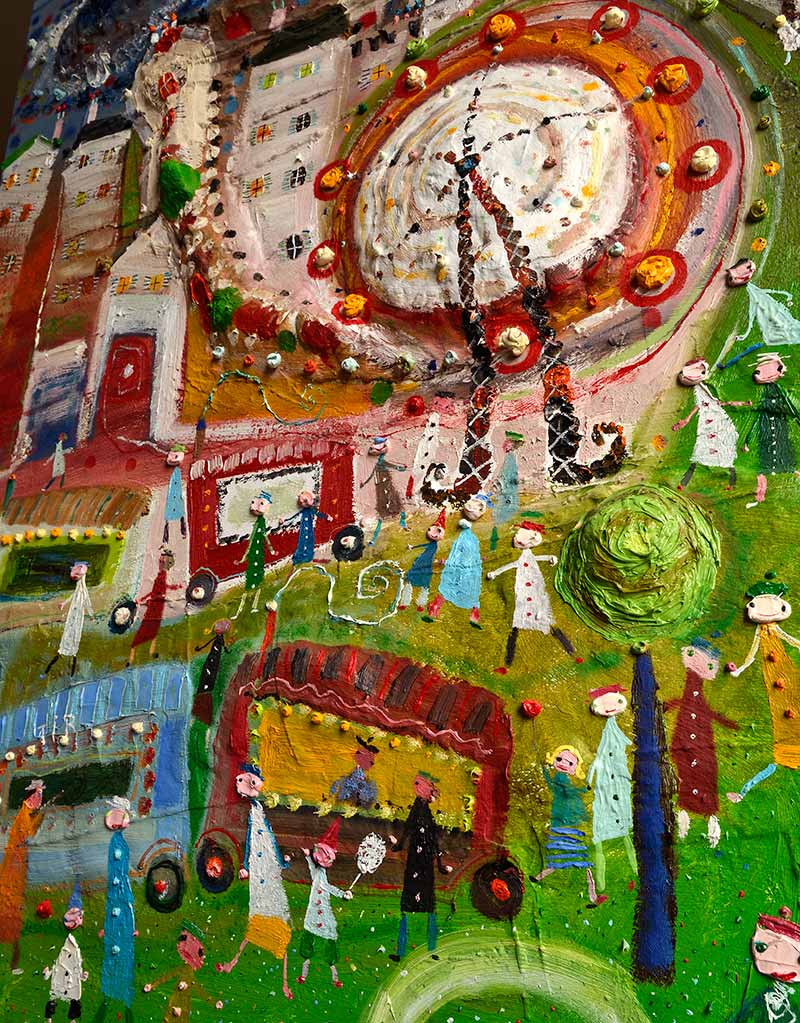PRESS
ERIC CHOMIS BY HIMSELF

« I have worked in order to be able to produce paintings that are both joyful and yet innocent, paintings that reflect the person I have always been. In fact I spend most of my time trying to create as best as I can, paintings that have a child like feel about them. I try to rediscover the imagination a child has when he first paints. I look for spontaneity in shapes, color and texture. A white canvas, pigments and the consistency of oil paints are ideal for what I seek to achieve. Why should one need to look for any other type of tools to find this type of primary or let’s say essential type of expression? I tend to put all my energy and work as an adult into choreographing my painting in the same way as Bonnard or Brugal did, if I dare say so. I want it to become art, pure poetry. Well, that’s my aim.
My painting is made up of imaginary or interior landscapes which only have a link with reality through how they are emotionally attached to the world. I confirm that my universe does breathe happiness, naivety and innocence because it speaks about paradise. This is a marvelous lost paradise, that of every childhood, where, as Baudelaire would say, “All is but a voluptuous calm luxury”. In order to create a painting I always begin with the matter, a first jet of matter. It acts as a skeleton, the spine of my narrative. I deposit paint in a random fashion. I shape a chaotic surface which will be the field of my imagination. I compare this to the walls of a cave, and I am the prehistoric man using his imagination. Once again it is this primary approach to art that I am looking for.
Once this first contact with the canvas has taken place as a substance, it is the paint that rules.
During this time I only use white paint. I let it dry so that the end result is like a carapace. Then on this layer which varies in thickness, and which can be even inexistent in places, I create in a certain drunken way the first premises of my painting, its melodic framework. I work on the color, matter,and shape next. This is what I call the “swing” of my painting.
The words are the final stage. This is the graphic subject of my painting. In spite of me this subject always revolves around these famous landscapes of interior dreams, those of childhood. At last comes a long period in time when I go over the work again and again.
This is what I call the touching up stage. I can take away or add until I come to something that gives off a certain presence.
Sometimes I go back over my past and evoke childhood memories of my hands soaked in paint at nursery school. Right up to this present moment that is what I am still doing”.
Eric Chomis